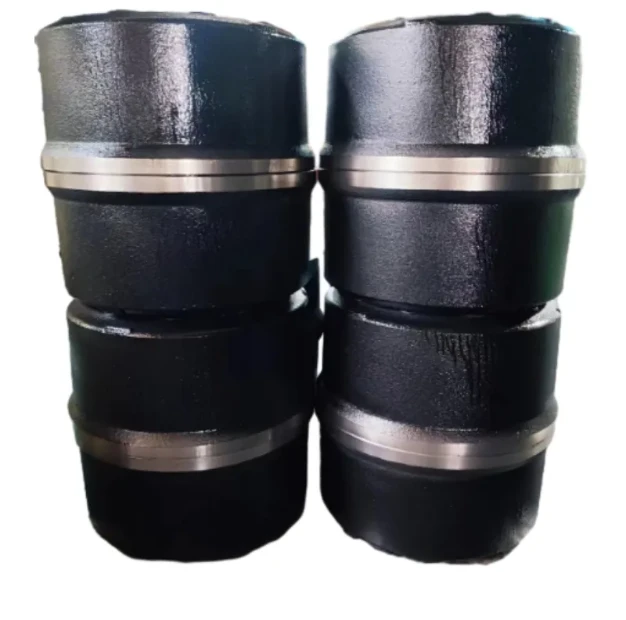Feb . 18, 2025 03:07
Back to list
drum vs rotor brakes
When it comes to braking systems, the debate between drum brakes and rotor brakes, also known as disc brakes, remains a hot topic among automotive enthusiasts and industry experts. Both systems have their unique features, advantages, and potential drawbacks. Understanding these elements can help consumers and manufacturers make informed decisions based on performance, maintenance, and application needs.
In comparing the two, it becomes evident that the choice isn't strictly about performance. It's also about the specific needs of the vehicle and the typical driving conditions. For example, vehicles that operate in rugged, off-road conditions or those built for heavy-duty applications often benefit from the durability and lower maintenance needs of drum brakes. Conversely, vehicles designed for speed and agility, such as sports cars or compact sedans, perform better with the enhanced capabilities of rotor brakes. In terms of professional expertise, manufacturers continually explore innovations in brake materials and designs to maximize the efficacy of both systems. Advanced ceramic and carbon composite materials have become popular in high-performance rotor brakes, offering incredible stopping power while minimizing weight and improving durability. Meanwhile, modifications to drum brake materials and layout have been explored to retain their relevance in modern vehicle applications. Authoritative studies within the automotive industry suggest that while rotor brakes are favored for their stopping power and modern features, drum brakes still hold a significant place in segments that prioritize durability and cost-effectiveness. Trustworthiness is maintained by relying on rigorous testing and real-world performance data, ensuring both systems meet safety and efficiency standards in their respective use cases. Ultimately, when assessing drum versus rotor brakes, it's clear that there is no one-size-fits-all solution. The decision should be guided by a combination of vehicle type, driving habits, maintenance capacity, and performance expectations. Each brake system offers unique benefits that can be optimized by understanding their strengths and applying them to the appropriate context. By considering these factors, consumers and designers can achieve a balance that meets both practical and safety requirements, ensuring optimal vehicle performance and longevity.


In comparing the two, it becomes evident that the choice isn't strictly about performance. It's also about the specific needs of the vehicle and the typical driving conditions. For example, vehicles that operate in rugged, off-road conditions or those built for heavy-duty applications often benefit from the durability and lower maintenance needs of drum brakes. Conversely, vehicles designed for speed and agility, such as sports cars or compact sedans, perform better with the enhanced capabilities of rotor brakes. In terms of professional expertise, manufacturers continually explore innovations in brake materials and designs to maximize the efficacy of both systems. Advanced ceramic and carbon composite materials have become popular in high-performance rotor brakes, offering incredible stopping power while minimizing weight and improving durability. Meanwhile, modifications to drum brake materials and layout have been explored to retain their relevance in modern vehicle applications. Authoritative studies within the automotive industry suggest that while rotor brakes are favored for their stopping power and modern features, drum brakes still hold a significant place in segments that prioritize durability and cost-effectiveness. Trustworthiness is maintained by relying on rigorous testing and real-world performance data, ensuring both systems meet safety and efficiency standards in their respective use cases. Ultimately, when assessing drum versus rotor brakes, it's clear that there is no one-size-fits-all solution. The decision should be guided by a combination of vehicle type, driving habits, maintenance capacity, and performance expectations. Each brake system offers unique benefits that can be optimized by understanding their strengths and applying them to the appropriate context. By considering these factors, consumers and designers can achieve a balance that meets both practical and safety requirements, ensuring optimal vehicle performance and longevity.
Next:
Latest news
-
Brake Drums for Trucks | OEM-Grade, Factory DirectNewsNov.10,2025
-
High-Performance Brake Drums for Trucks | OEM & ISONewsNov.10,2025
-
Brake Drums Built to Last — OEM-Grade, Balanced for TrucksNewsNov.10,2025
-
Brake Drums for Trucks – OEM-Grade, Durable, Low NoiseNewsNov.10,2025
-
Brake Drums for Trucks | OEM, ISO-Certified, Fast DeliveryNewsNov.10,2025
-
Brake Drums: OEM-Grade, Precision Balanced, Factory DirectNewsNov.03,2025
-
Brake Drums: Heavy-Duty, OEM-Grade, Precision-BalancedNewsNov.03,2025


